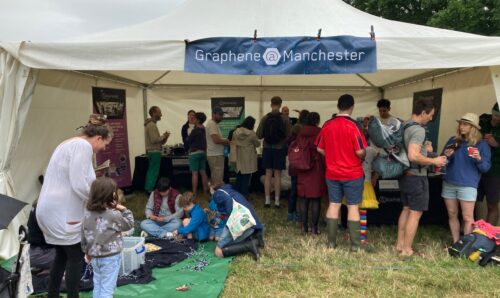Next generation graphene sensors showcased at Mobile World Congress 2019
Research 22 February 2019
Mobile World Congress (MWC) is the largest mobile event in the world, bringing together the latest innovations and leading-edge technology from more than 2,400 leading companies, assembling today’s visionaries to explore the hottest topics influencing the industry.
Next week, over 100,000 people will descend on Barcelona, looking for the next big thing in mobile technology. Amongst the exhibitors will be Atomic Mechanics Ltd. – a University of Manchester spin-out company, exhibiting a novel and breakthrough transparent, flexible force-touch sensor.
Atomic Mechanics will be part of the Graphene Pavilion organised by the Graphene Flagship, which will showcase graphene-based prototypes and devices that will transform the future of mobile phones, telecommunications, wearables and home technology.
The sensor, made with graphene, allows accurate sensing and measurement of force, touch and pressure.
60% of mobile device users cited usability problems such as touch accuracy when making on-screen selections and accidental unintended pressing have been raised as issues of frustration by many users.
The newly developed film utilises graphene’s multiple superlative properties. Graphene is a perfect material for this new technology as it is strong, transparent, flexible and extremely conductive, leading to enhanced functionality.
The technology was developed in the Nanofunctional Materials Group and the National Graphene Institute at The University of Manchester, with the support of the Engineering and Physical Sciences Research Council (EPSRC).
Dr Christian Berger, Chief Technology Officer at Atomic Mechanics and Dr Daniel Melendrez were awarded the 2017 Eli and Britt Harari Graphene Enterprise Award to commercialise this technology. Atomic Mechanics was established with the support of Graphene Enabled Systems Ltd., which supports the commercialisation of University technologies in 2-dimensional (2D) materials and beyond.
Dr Aravind Vijayaraghavan, who serves as Scientific Advisor to Atomic Mechanics, explains: “The sensor comprises of a layer of graphene covering an array of cavities to form a capacitive micro-electro-mechanical (MEMS) device. The resulting sensor takes advantage of graphene’s unique combination of superlative properties, such as high strength, high electrical conductivity and transparency. A prototype of the sensor was shown to outperform the current state of the art MEMS pressure sensors in its sensitivity, pressure sensing range and miniaturisation.”
Dr Christian Berger, explains the potential that this technology will have: “The graphene sensor film under development will comprise of an array of such sensors, and is ultra-thin, transparent, and flexible. It can be formed onto 3D surfaces and integrated into flexible devices. This technology can therefore be used as an electronic skin that can allow any surface to become highly responsive to its environments for applications in healthcare, robotics, personal electronics, gaming, digital music making and industry 4.0.”
Atomic Mechanics Ltd. is actively seeking new investment and technology partners to further develop and commercialise this breakthrough technology.
For more information, visit www.atomic-mechanics.com
Atomic MechanicsBarcelonagrapheneMobile World Congresssensors




